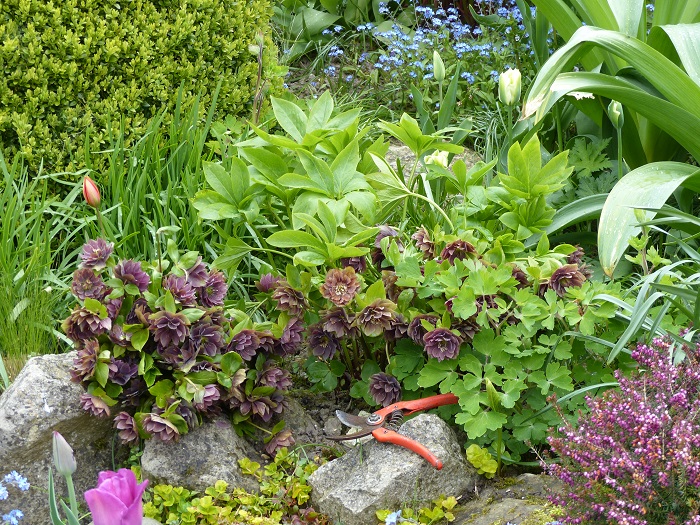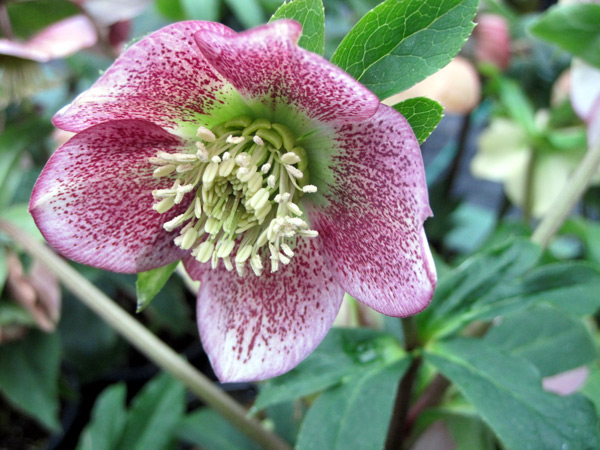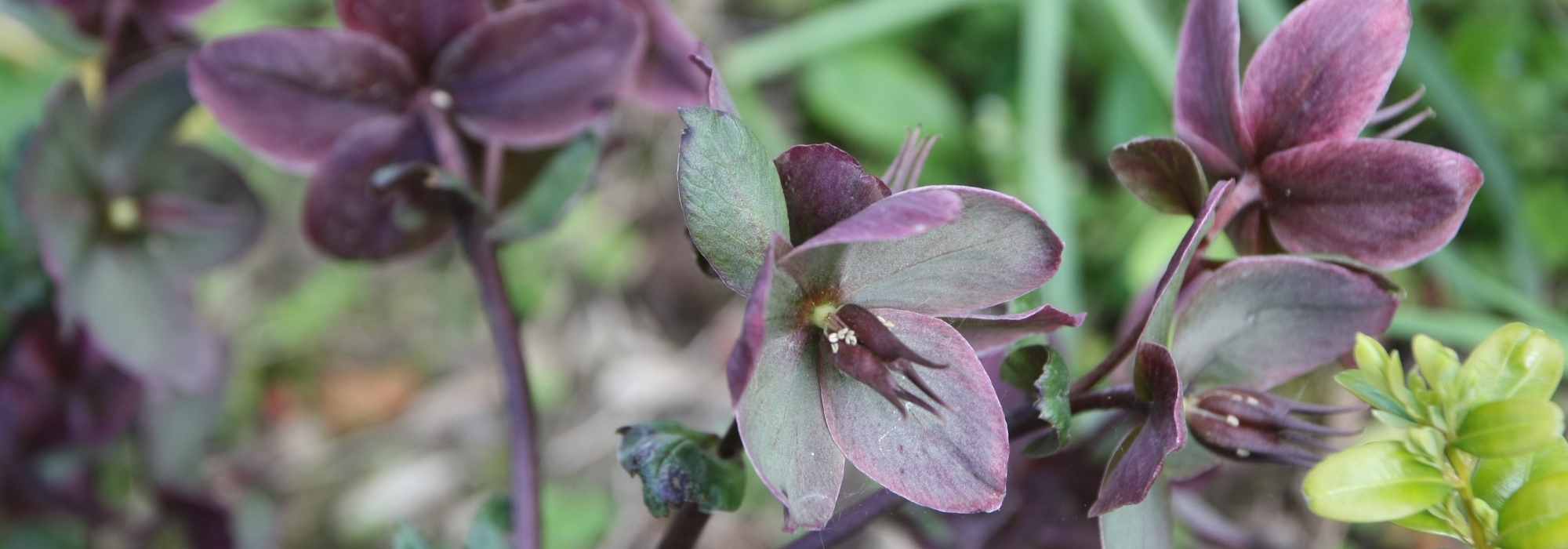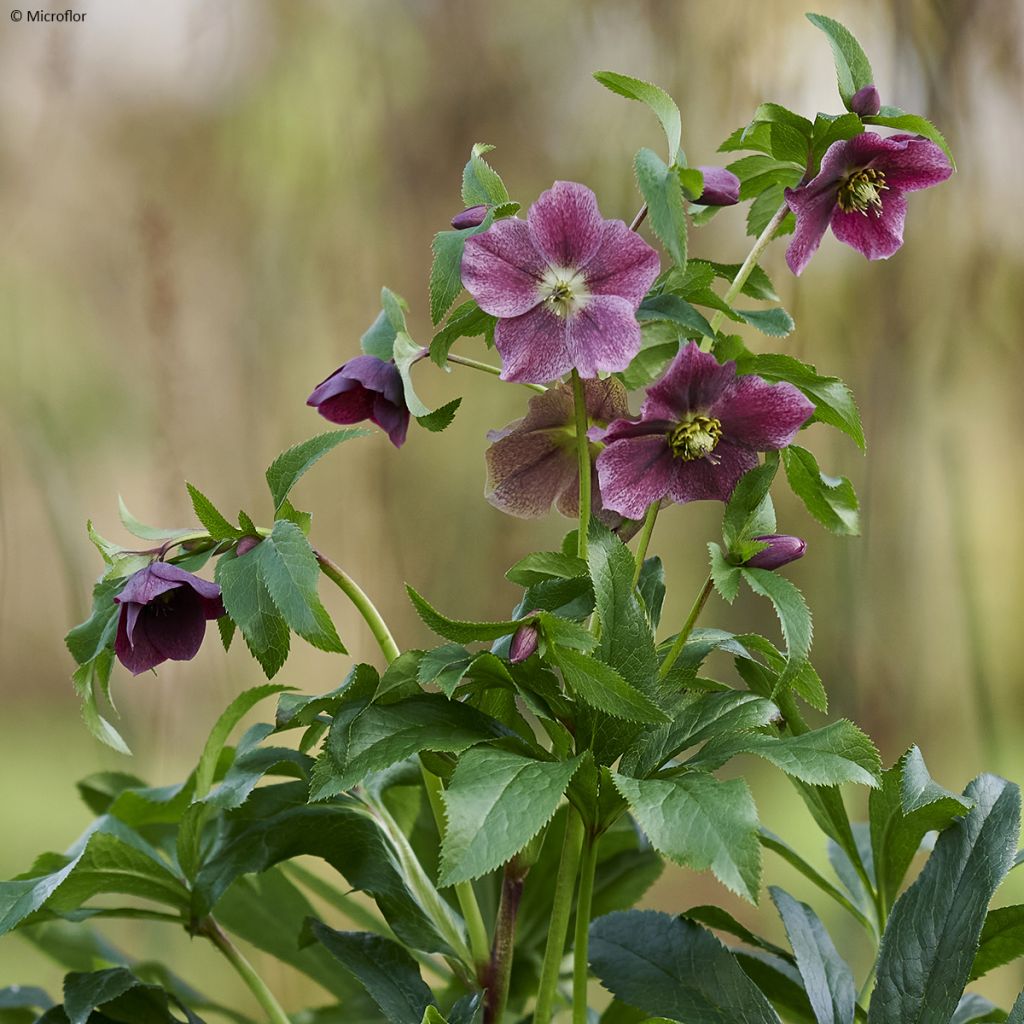

Hellébore ViV® Elsa - Helleborus orientalis
Helleborus hybridus ViV Elsa
Helleborus x hybridus ViV® Elsa
Lenten Rose, Oriental Hellebore
Special offer!
Receive a €20 voucher for any order over €90 (excluding delivery costs, credit notes, and plastic-free options)!
1- Add your favorite plants to your cart.
2- Once you have reached €90, confirm your order (you can even choose the delivery date!).
3- As soon as your order is shipped, you will receive an email containing your voucher code, valid for 3 months (90 days).
Your voucher is unique and can only be used once, for any order with a minimum value of €20, excluding delivery costs.
Can be combined with other current offers, non-divisible and non-refundable.
Home or relay delivery (depending on size and destination)
Schedule delivery date,
and select date in basket
This plant carries a 12 months recovery warranty
More information
We guarantee the quality of our plants for a full growing cycle, and will replace at our expense any plant that fails to recover under normal climatic and planting conditions.
Would this plant suit my garden?
Set up your Plantfit profile →
Description
Viv Elsa is part of the Oriental Hellebores with fairly significant growth, reaching or exceeding 50 cm (20in) in all directions. Blooming for several weeks from September, this Lenten Rose produces single flowers, tinged with red and violet veins illuminated by a yellow heart. This very floriferous variety will be comfortable in not too dry soil, in semi-shaded exposure and will even tolerate denser shade. In a large pot, you can also grow it on a balcony or terrace, sheltered from the sun's rays, though there are many more suitable compact varieties. Its beautiful sculptural, evergreen, dark green, cut, foliage, makes it a decorative plant all year round.
The ViV Hellebores are varieties derived from in vitro multiplication. Unlike varieties derived from seed multiplication, Hellebores produced by in vitro guarantee a flowering that is rigorously identical to the variety from which they originate. They have the same genetic characteristics as the mother plant, are more vigorous and develop in a uniform manner.
Hellebore Viv Elsa is derived from in vitro culture and not from seed, it is a disease-free variety, more compact, more floriferous and more colourful. It belongs to the Ranunculaceae family, which includes about sixty genera and about 2500 species. The species Helleborus orientalis is native to Greece, Turkey and the centre and east of the Caucasus. It is a perennial plant that hybridizes very easily with other species to produce hybrids with very varied colours and shapes, variety names are rarely given to these hybrids; they are distinguished by their shape and colour. Oriental Hellebore is a hardy plant that tolerates temperatures down to -15 °C, naturally growing in forests, thickets and clearings up to 2,000 m altitude.
This variety forms a tuft 45 to 55 cm (18 to 22in) high with an equivalent width. Its dense vegetation is composed of palmate, slightly toothed, dark green and shiny, evergreen basal leaves which actually only live for 8 months and are regularly replaced by new leaves.
Elsa blooms very early and abundantly, for long weeks from September. Its single flowers are composed of 5 petals that form a very open corolla, with a ribbed velvet appearance, with violet veins running through the reddish surface. The yellow heart contrasts quite strongly with the colour of the petals, which further enhances the aesthetics of these flowers. As with most varieties, these brightly coloured corollas are arranged in a vertical plane, or even slightly inclined downwards, allowing water to slide off like an umbrella, avoiding accumulation in the heart that could rot. Rising well above the dark mass of foliage, Elsa's flowers are highly visible and very decorative in autumn.
Hellebores do not like to be moved once established, with young plants sometimes taking time to flower, so be sure to choose its location carefully.
This Viv Elsa Hellebore will brighten up your autumns with its vibrant and abundant flowering. As a flagship plant for autumn, Elsa will be the starting point for a border that will allow you to enjoy blooms all year round. The many other varieties of Hellebores available will also allow you to flower your winter. Consider enhancing your semi-shaded border with Snowdrops (Galanthus nivalis), with their charming white bells full of life in the heart, in late winter. Bergenia, of which there are several varieties with often vibrant, white or pink flowers, will then take over until spring. The cultivar Eden's Dark Margin will be a perfect companion for Elsa, with its leaves turning purple in winter and thus contrasting with those of our Hellebore.
Helleborus hybridus ViV Elsa in pictures


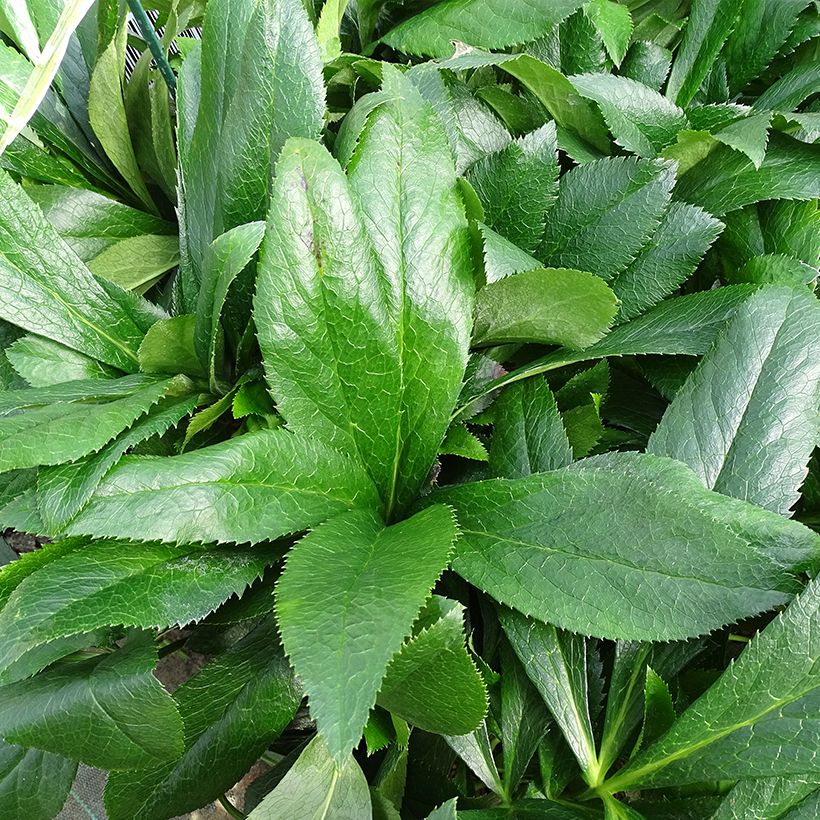



Flowering
Foliage
Plant habit
Safety measures
Botanical data
Helleborus
x hybridus
ViV® Elsa
Ranunculaceae
Lenten Rose, Oriental Hellebore
Cultivar or hybrid
ingestion
Cette plante est toxique si elle est ingérée volontairement ou involontairement.
Ne la plantez pas là où de jeunes enfants peuvent évoluer, et lavez-vous les mains après l'avoir manipulée.
Pensez à conserver l'étiquette de la plante, à la photographier ou à noter son nom, afin de faciliter le travail des professionnels de santé.
Davantage d'informations sur https://plantes-risque.info
Planting and care
Oriental Hellebore Elsa grows in any neutral to moderately chalky soil, or even slightly acidic, rich, light or clayey, in partial or light shade, sheltered from cold and dominant winds. Avoid direct sunlight during the hottest hours by choosing a shaded (semi-shaded in the north) exposure. This perennial should be planted from early autumn to spring. It thrives in deeply worked soil mixed with organic matter. To feed it, use bone meal or another slow-release organic fertilizer. Water well after planting and then add a layer of mulch 2 to 5 cm (1 to 2in) thick. Regularly remove faded leaves to improve flowering. Ensure a planting distance of 30 to 40 cm (12 to 16in) between each plant to promote their development. Hellebore does not tolerate stagnant water as it can cause rot.
The roots should not completely dry out in summer. Hellebores can be affected by a fungal disease transmitted by aphids, called black spot. Remove any stained leaves when the flower buds appear. Remove faded flowers after seeding. They can also suffer from grey rot or die from collar rot due to poor growing conditions, in excessively damp situations.
You can also plant this perennial in a pot on a balcony or terrace, in which case, provide a sufficiently large pot for its root system to develop properly, as well as its above-ground part. This Hellebore can withstand temperatures down to -15 °C, or even lower, allowing it to grow practically anywhere.
Planting period
Intended location
Care
Planting & care advice
This item has not been reviewed yet - be the first to leave a review about it.
Similar products
Haven't found what you were looking for?
Hardiness is the lowest winter temperature a plant can endure without suffering serious damage or even dying. However, hardiness is affected by location (a sheltered area, such as a patio), protection (winter cover) and soil type (hardiness is improved by well-drained soil).

Photo Sharing Terms & Conditions
In order to encourage gardeners to interact and share their experiences, Promesse de fleurs offers various media enabling content to be uploaded onto its Site - in particular via the ‘Photo sharing’ module.
The User agrees to refrain from:
- Posting any content that is illegal, prejudicial, insulting, racist, inciteful to hatred, revisionist, contrary to public decency, that infringes on privacy or on the privacy rights of third parties, in particular the publicity rights of persons and goods, intellectual property rights, or the right to privacy.
- Submitting content on behalf of a third party;
- Impersonate the identity of a third party and/or publish any personal information about a third party;
In general, the User undertakes to refrain from any unethical behaviour.
All Content (in particular text, comments, files, images, photos, videos, creative works, etc.), which may be subject to property or intellectual property rights, image or other private rights, shall remain the property of the User, subject to the limited rights granted by the terms of the licence granted by Promesse de fleurs as stated below. Users are at liberty to publish or not to publish such Content on the Site, notably via the ‘Photo Sharing’ facility, and accept that this Content shall be made public and freely accessible, notably on the Internet.
Users further acknowledge, undertake to have ,and guarantee that they hold all necessary rights and permissions to publish such material on the Site, in particular with regard to the legislation in force pertaining to any privacy, property, intellectual property, image, or contractual rights, or rights of any other nature. By publishing such Content on the Site, Users acknowledge accepting full liability as publishers of the Content within the meaning of the law, and grant Promesse de fleurs, free of charge, an inclusive, worldwide licence for the said Content for the entire duration of its publication, including all reproduction, representation, up/downloading, displaying, performing, transmission, and storage rights.
Users also grant permission for their name to be linked to the Content and accept that this link may not always be made available.
By engaging in posting material, Users consent to their Content becoming automatically accessible on the Internet, in particular on other sites and/or blogs and/or web pages of the Promesse de fleurs site, including in particular social pages and the Promesse de fleurs catalogue.
Users may secure the removal of entrusted content free of charge by issuing a simple request via our contact form.
The flowering period indicated on our website applies to countries and regions located in USDA zone 8 (France, the United Kingdom, Ireland, the Netherlands, etc.)
It will vary according to where you live:
- In zones 9 to 10 (Italy, Spain, Greece, etc.), flowering will occur about 2 to 4 weeks earlier.
- In zones 6 to 7 (Germany, Poland, Slovenia, and lower mountainous regions), flowering will be delayed by 2 to 3 weeks.
- In zone 5 (Central Europe, Scandinavia), blooming will be delayed by 3 to 5 weeks.
In temperate climates, pruning of spring-flowering shrubs (forsythia, spireas, etc.) should be done just after flowering.
Pruning of summer-flowering shrubs (Indian Lilac, Perovskia, etc.) can be done in winter or spring.
In cold regions as well as with frost-sensitive plants, avoid pruning too early when severe frosts may still occur.
The planting period indicated on our website applies to countries and regions located in USDA zone 8 (France, United Kingdom, Ireland, Netherlands).
It will vary according to where you live:
- In Mediterranean zones (Marseille, Madrid, Milan, etc.), autumn and winter are the best planting periods.
- In continental zones (Strasbourg, Munich, Vienna, etc.), delay planting by 2 to 3 weeks in spring and bring it forward by 2 to 4 weeks in autumn.
- In mountainous regions (the Alps, Pyrenees, Carpathians, etc.), it is best to plant in late spring (May-June) or late summer (August-September).
The harvesting period indicated on our website applies to countries and regions in USDA zone 8 (France, England, Ireland, the Netherlands).
In colder areas (Scandinavia, Poland, Austria...) fruit and vegetable harvests are likely to be delayed by 3-4 weeks.
In warmer areas (Italy, Spain, Greece, etc.), harvesting will probably take place earlier, depending on weather conditions.
The sowing periods indicated on our website apply to countries and regions within USDA Zone 8 (France, UK, Ireland, Netherlands).
In colder areas (Scandinavia, Poland, Austria...), delay any outdoor sowing by 3-4 weeks, or sow under glass.
In warmer climes (Italy, Spain, Greece, etc.), bring outdoor sowing forward by a few weeks.



































